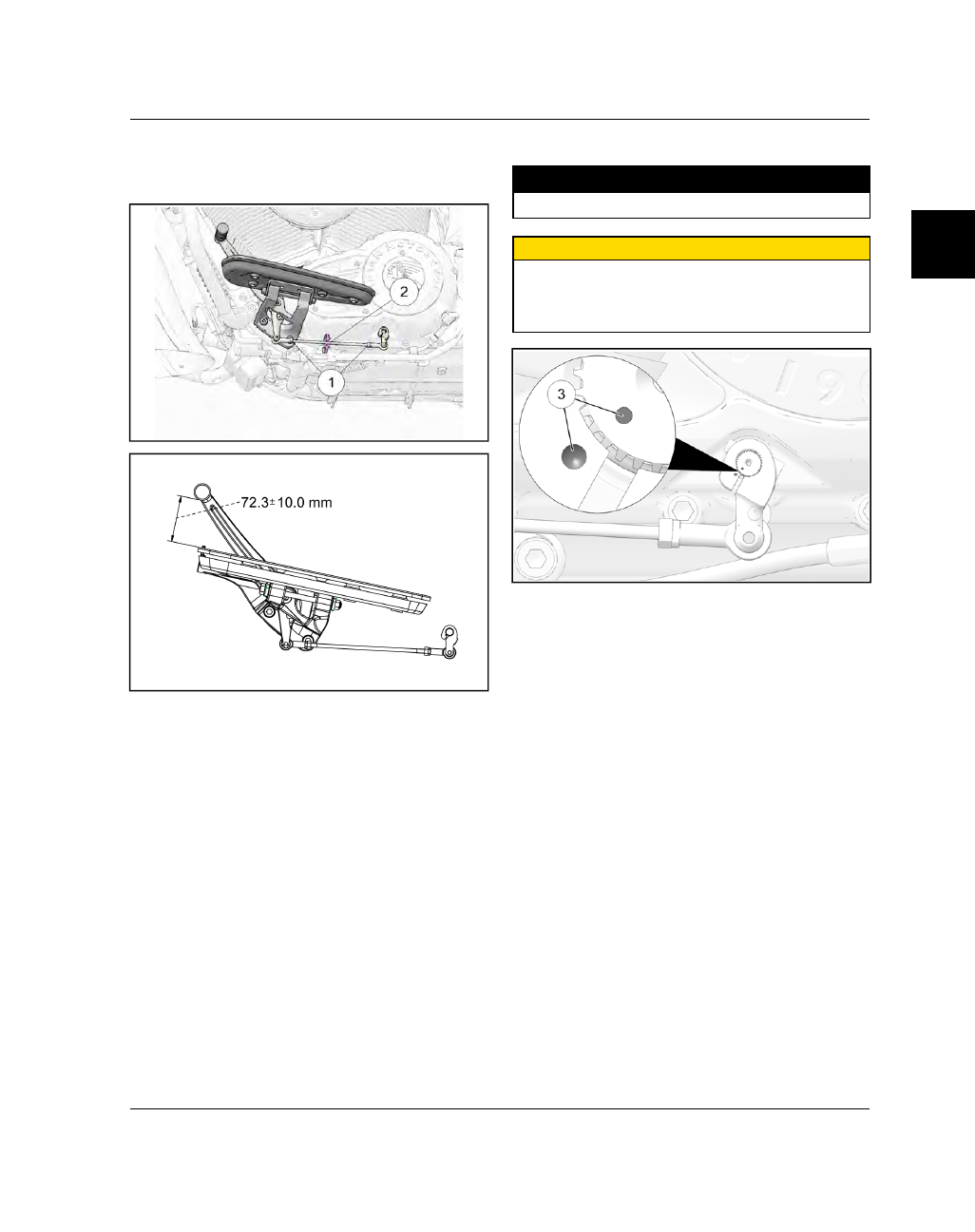Indian motorcycle 2017. Service Manual - page 6

2.17
SSHHIIFFTT PPEEDDAALL AADDJJUUSSTTM
MEENNTT
1.
Loosen jam nuts
q
.
2.
Rotate linkage rod
w
until pedal angle is correct.
3.
Tighten jam nuts
q
to specification.
TORQUE
Shift Rod Jam Nuts:
84 in-lbs (10 Nm)
CAUTION
Do not remove and reposition the shift arm on the
shift shaft to adjust gear shift pedal height. Dots on
shift shaft and shift arm must be aligned for gears to
shift correctly.